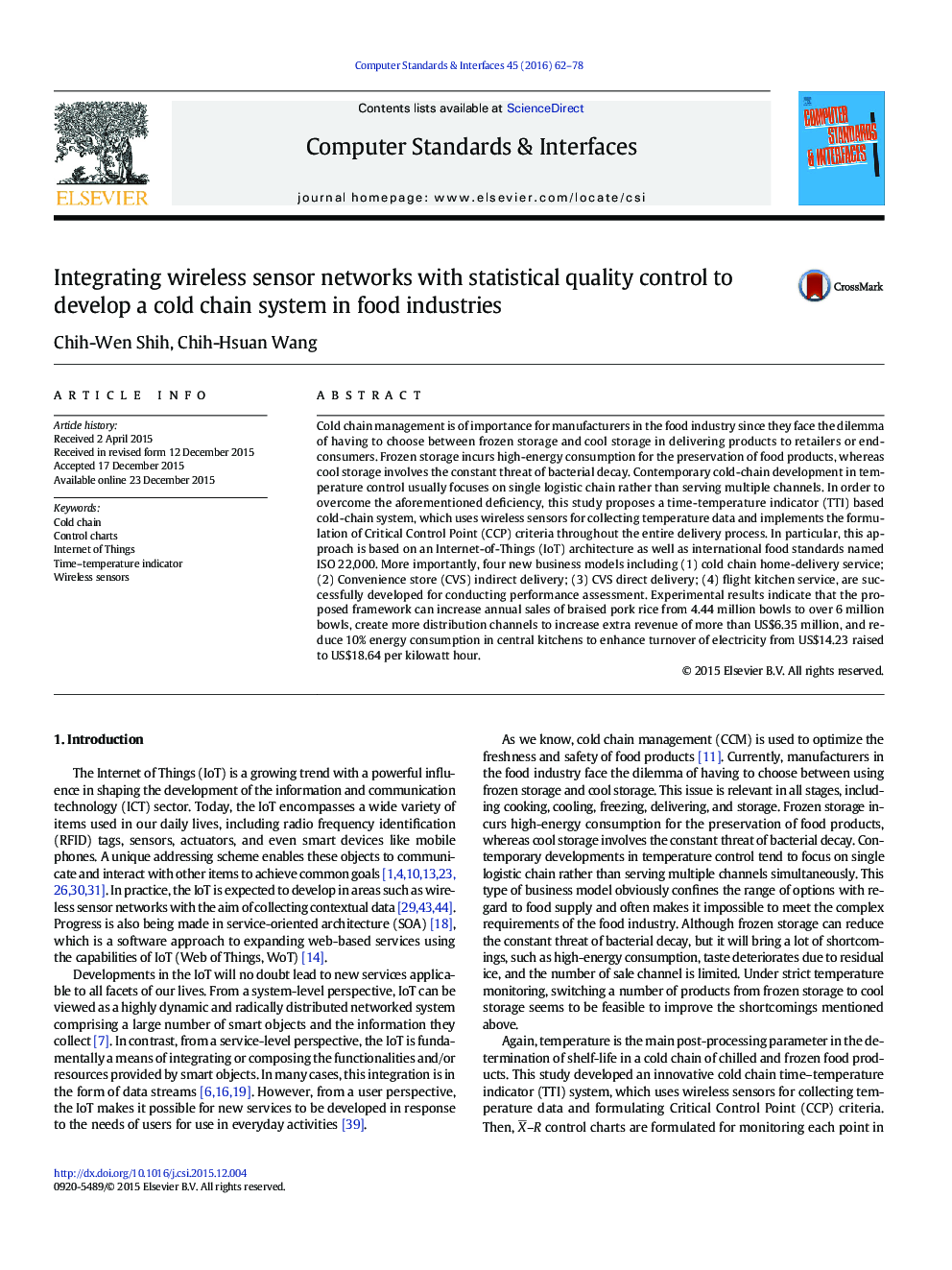| کد مقاله | کد نشریه | سال انتشار | مقاله انگلیسی | نسخه تمام متن |
|---|---|---|---|---|
| 454302 | 695151 | 2016 | 17 صفحه PDF | دانلود رایگان |
• Wireless sensors are adopted to construct a time-temperature indicator system,
• Switching from frozen storage to cool storage is achieved in a food cold chain,
• Annual rice sales are increased from 4.44 million bowls to over 6 million bowls,
• More than 150 jobs and extra revenue of 6.35 million in $USD are created,
• 10% reduction in energy costs is accomplished to enhance turnover of electricity.
Cold chain management is of importance for manufacturers in the food industry since they face the dilemma of having to choose between frozen storage and cool storage in delivering products to retailers or end-consumers. Frozen storage incurs high-energy consumption for the preservation of food products, whereas cool storage involves the constant threat of bacterial decay. Contemporary cold-chain development in temperature control usually focuses on single logistic chain rather than serving multiple channels. In order to overcome the aforementioned deficiency, this study proposes a time-temperature indicator (TTI) based cold-chain system, which uses wireless sensors for collecting temperature data and implements the formulation of Critical Control Point (CCP) criteria throughout the entire delivery process. In particular, this approach is based on an Internet-of-Things (IoT) architecture as well as international food standards named ISO 22,000. More importantly, four new business models including (1) cold chain home-delivery service; (2) Convenience store (CVS) indirect delivery; (3) CVS direct delivery; (4) flight kitchen service, are successfully developed for conducting performance assessment. Experimental results indicate that the proposed framework can increase annual sales of braised pork rice from 4.44 million bowls to over 6 million bowls, create more distribution channels to increase extra revenue of more than US$6.35 million, and reduce 10% energy consumption in central kitchens to enhance turnover of electricity from US$14.23 raised to US$18.64 per kilowatt hour.
Journal: Computer Standards & Interfaces - Volume 45, March 2016, Pages 62–78
